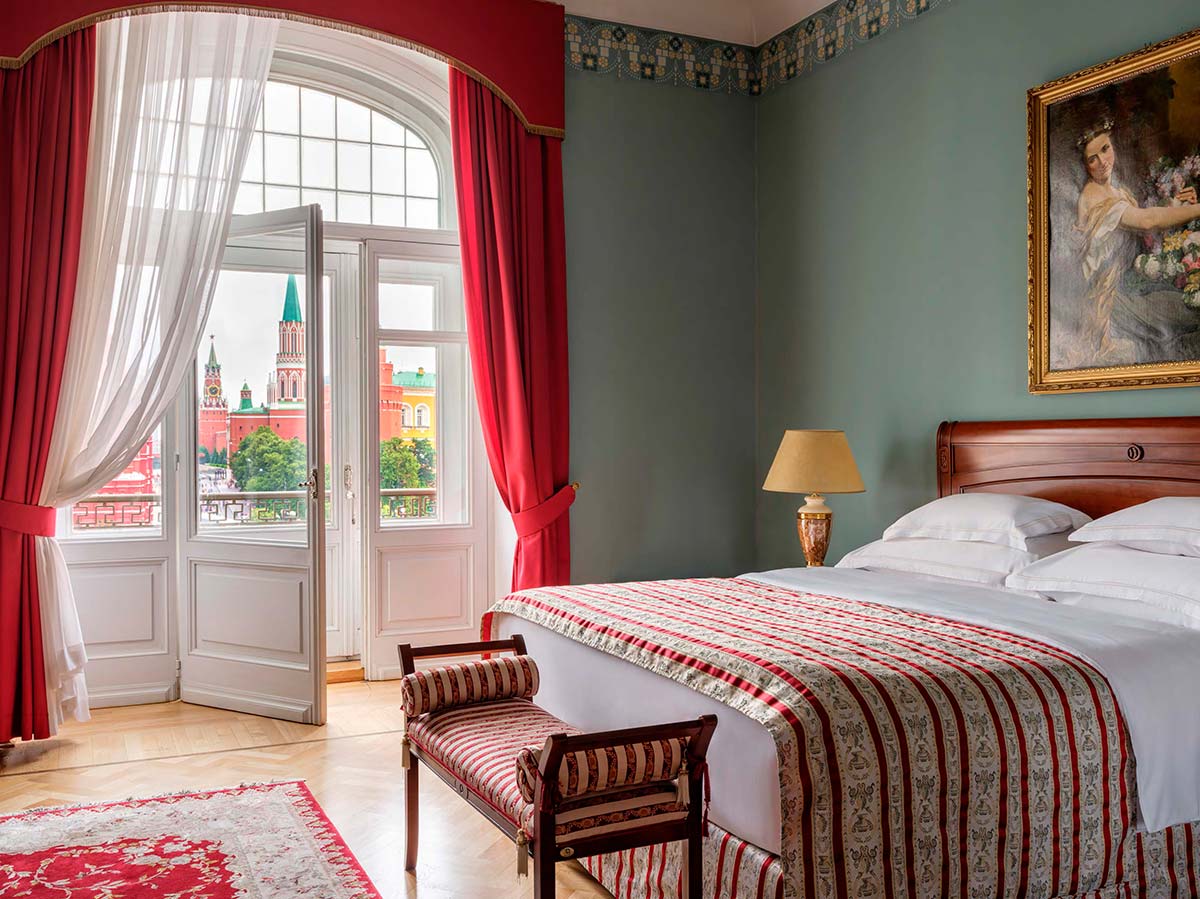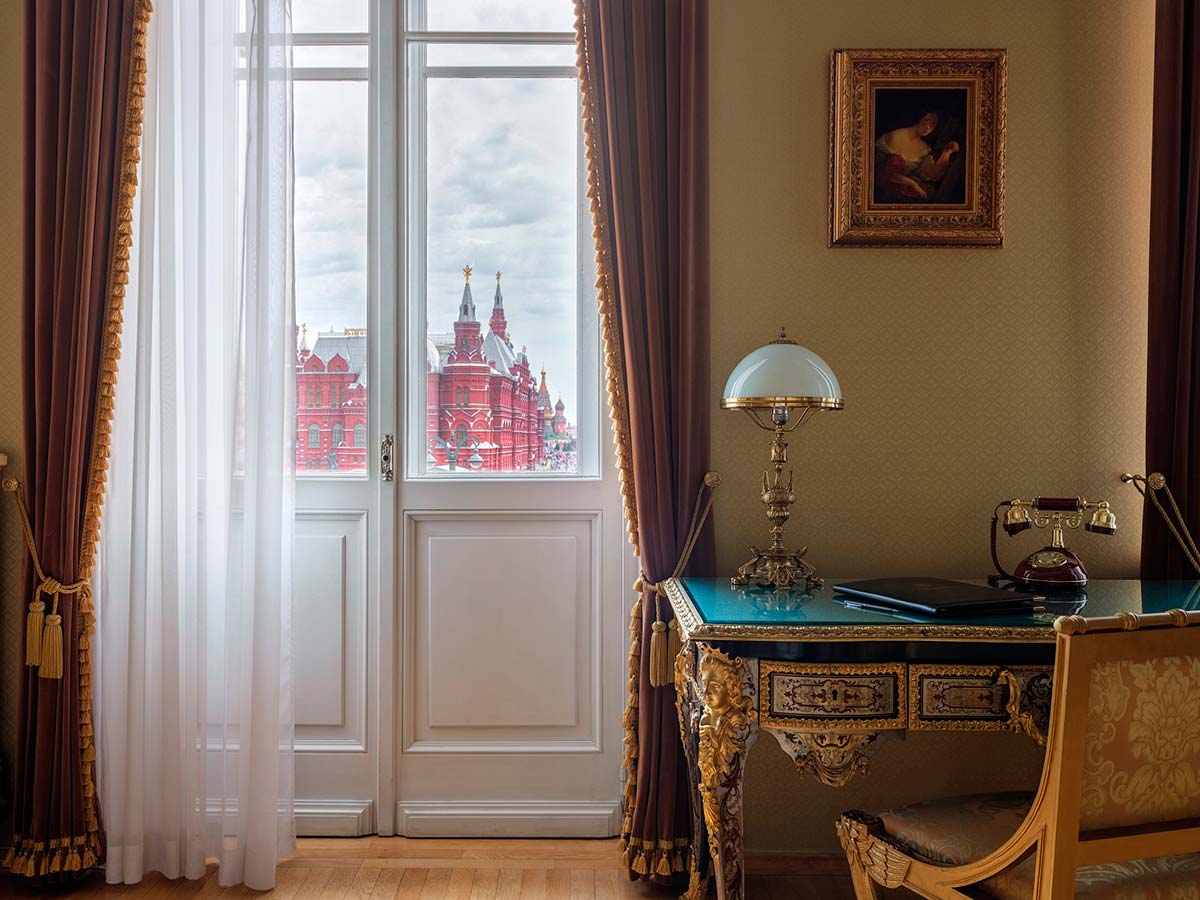Having retained its original splendour intact, it testifies to a rich and deeply rooted cultural heritage. Hence, the Hotel National stands in all of its glory in the heart of Moscow, looking out onto the Red Square and the Kremlin. Built in 1903 by the renowned Russian architect Alexander Ivanov – who combined Renaissance and classical architecture with modern decorative elements – for over one century, the National has been a public, political and cultural landmark and has provided hospitality, in the course of its history, to heads of state and governments, diplomats and businessmen, army officials, scientists, writers and musicians.
We interviewed General Manager Jesper Franci who told us about the hotel at 360 degrees.

How does the hotel fit into the city of Moscow?
Built at the turn of the century, Hotel National marries renaissance and classical style with modern embellishments, fashionable at the time of its construction. The hotel itself is a gem of imperial architecture and harmoniously fits into the city`s ensemble of architecture of different epochs, connecting two historical streets – Tverskaya and Mokhovaya
What kind of travelers does the hotel attract?
Hotel National guests are mostly well-traveled and sophisticated culture connoisseurs. They exhibit a taste for refined luxury and exclusive access, and are often collectors of the rare. Certainly, we welcome business travelers, tourists who come in groups and locals; however, all of them have an attitude of global explorers who seek for off-the-beaten-path experiences.

National hotel is located in a historic building: what are the main changes?
The construction began in 1901 and the 160-room hotel opened on January 1, 1903 – nowadays the hotel features 202 rooms. By 1931 the building was in need of repair and was given a complete renovation to house foreign visitors. It was redecorated with museum-quality furniture and antiques from Russian palaces. The pieces remain in the hotel’s collection to this day. In 1930-s the huge mosaic on the hotel’s upper corner was replaced with a 120-square meter socialist realist artwork focusing on the industrial might of the Soviet economy. In the late 1960s the Hotel Intourist, a towering, modern glass structure, was constructed adjacent to Hotel National. Then Hotel National was renovated from 1991-1995 when the seventh floor with panoramic swimming pool and several rooms were added to the original construction.
How did you balance the historical architecture with the contemporary style interior?
Indeed we tend to keep the genuine historical interiors of the hotel. To reach the balance between today and the past we use styled with classic Italian furnishings for room layouts with state-of-the-art minimalist technical assets. Certain our suites are still as they had been designed in 1903, still decorated with antiques from European countries, Bohemian glass chandeliers, antique furnishings and original and rare artworks including vases, paintings and statues.
Who are the designers that sign the interior project? Are there international companies furnishing the rooms and the common spaces or you choose among local producers?
The interiors that welcome our guests today were created by Austrian designers and architects. Architect F. Ulbing designed art nouveau style furniture. Italian companies were involved to make sets of furniture. Austrian firms produced wooden fittings and furnishings and took care of various finishings in the rooms.

The structure has played a leading role in many of the historical events that took place in Moscow, such as the October Revolution in 1918. Are there any elements in the hotel that enhance its historicity?
In the aftermath of the Russian Revolution, the capital of Russia was moved to Moscow. After the Bolsheviks’ victory, all Moscow hotels were nationalized and by March 1918, the hotel had become the home of Soviet Central Executive Committee. While the Kremlin had been damaged during fighting in October 1917 and was under repair, Lenin made his home in room 107 at the Hotel National with his wife, Nadezhda Krupskaya. This room is marked today with a golden plaque noting this event.
Which are the benefits and what does it mean to be part of the The Luxury Collection by Marriott?
The Luxury Collection is an ensemble of locally authentic hotels and resorts, which continuously expands through the globe. Belonging to the brand allows boosting hotel recognition on the global level. That also opens our doors to millions of members of Marriott Bonvoy – the world’s largest hotel loyalty program born out of the merger of SPG, Marriott Rewards and Ritz Carlton Rewards. Being part of the The Luxury Collection by Marriott means being part of a proud history and a thriving culture.







